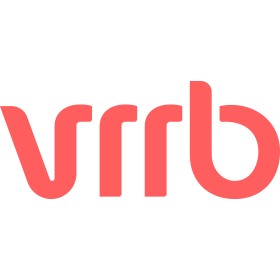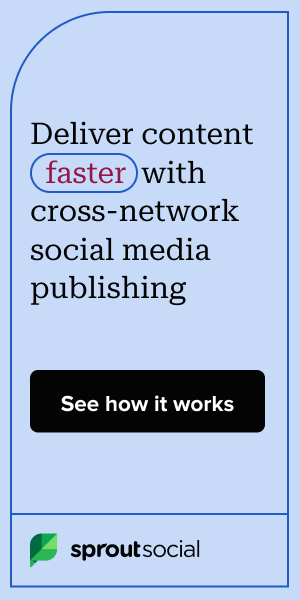
Crafting Compelling Narratives: Elevating Your Digital Brand Through Strategic Visual Storytelling
In today’s digital age, where attention spans are shorter than ever, the ability to tell a compelling story is crucial for brands looking to stand out online. Storytelling has been ingrained in human culture for centuries, and now, it’s taking center stage in digital branding.
So, what exactly is strategic visual storytelling, and why does it matter? Well, think of it as the art of using visuals—such as images, videos, and infographics—to convey a brand’s message in a way that resonates with its audience. It’s about more than just pretty pictures; it’s about creating a narrative that captures attention, evokes emotion, and ultimately drives action.
But why is storytelling so important in digital branding? Research shows that stories are up to 22 times more memorable than facts alone. By tapping into the power of storytelling, brands can create a deeper connection with their audience, fostering loyalty and trust over time.
Significance of Visual Storytelling
Visual storytelling uses images, videos, and other visual elements to convey a narrative. It’s about more than just showcasing products or services; it’s about telling a story that resonates with your audience and creates an emotional connection.
But why does storytelling, in general, resonate so strongly with audiences? Well, it all comes down to psychology. Research has shown that stories activate parts of the brain that are associated with empathy and understanding. When we hear a story, our brains release oxytocin, which promotes bonding and trust. This makes us more receptive to the message being conveyed.
So, how do visuals enhance storytelling effectiveness? For starters, visuals can evoke emotion in a way that words alone cannot. Visuals can capture attention and create a lasting impression, whether a striking image or a compelling video.
Key Elements of Compelling Narratives
When crafting compelling narratives for your brand, several key elements must be considered. Let’s break them down:
- Identifying your brand’s narrative: Before telling a compelling story, you must know what story you want to tell. Take some time to think about your brand’s values, mission, and unique selling points. What sets your brand apart from the competition? Once you clearly understand your brand’s narrative, you can craft a story that resonates with your audience.
- The hero’s journey: One effective storytelling technique is the hero’s journey, a narrative structure popularized by Joseph Campbell. In this framework, the protagonist (or hero) embarks on a journey, faces challenges and obstacles, and ultimately undergoes personal growth and transformation. As a brand, you can apply this structure to your storytelling by positioning your product or service as the solution to your customers’ problems, guiding them on their journey to success.
- Character development: Like a novel or movie, your brand should have its own personality and identity. This involves more than just having a catchy slogan or logo; it’s about creating a consistent brand voice and tone that resonates with your target audience. Think about your brand as a character in a story—what traits define it? By giving your brand personality, you can make it more relatable and memorable to your audience.
- Setting the scene: To immerse your audience in your brand’s story, create a compelling setting or environment. This could be a physical space, such as a store or office, or a digital space, such as a website or social media platform. Pay attention to the design, imagery, and messaging used in these spaces, as they can help set the tone for your brand story and enhance the overall storytelling experience for your audience.
Choosing the Right Visuals
When choosing the right visuals for your brand, there are a few key factors to consider. Let’s explore them:
- Types of visual content: Visual content comes in many forms, including images, videos, infographics, and more. Each type of visual has its own strengths and can convey different messages. Images are great for capturing attention quickly, while videos can tell a more in-depth story. Infographics are perfect for presenting complex information in a visually appealing way. Consider your brand’s goals and your audience’s preferences when choosing the right type of visual content.
- Understanding your audience: One of the most important aspects of choosing the right visuals is understanding your audience. What types of visuals do they respond to? What are their preferences and interests? By tailoring your visuals to your audience’s preferences, you can create content that resonates with them on a deeper level. Conducting audience research and gathering feedback can help you better understand what types of visuals will be most effective for your brand.
- Consistency is key: Developing a cohesive visual style is essential for building brand recognition and trust. Consistency in visual elements such as colors, fonts, and imagery helps reinforce your brand identity and make your content more recognizable. Whether creating social media posts, website graphics, or printed materials, maintaining a consistent visual style will help strengthen your brand’s presence across all channels.
- The power of authenticity: In today’s digital world, authenticity is more important than ever. Using genuine visuals that reflect your brand’s real experiences and values can help you connect with your audience on a more personal level. Avoid using stock photos or generic imagery that feels staged or inauthentic. Instead, opt for real-life photos and videos that showcase the people, places, and products that make your brand unique.
Tools and Resources for Visual Storytelling
When it comes to visual storytelling, having the right tools can make all the difference. Here are some valuable tools and resources to help bring your visual storytelling to life:
- Graphic design tools:
- Canva: Canva is a user-friendly graphic design platform that offers a wide range of templates, images, and design elements to create stunning visuals for social media, presentations, and more.
- Adobe Spark: Adobe Spark is another popular design tool that allows users to easily create graphics, web pages, and videos using professionally designed templates and intuitive editing tools.
- Video editing software:
- Adobe Premiere Pro: Adobe Premiere Pro is a professional-grade video editing software with powerful features and tools for editing and enhancing videos.
- Final Cut Pro: Final Cut Pro is a popular video editing software for Mac users. It is known for its advanced editing capabilities and intuitive interface.
- Stock photo and video websites:
- Unsplash: Unsplash offers a vast collection of high-quality, royalty-free photos that photographers contribute worldwide.
- Pexels: Pexels provides free stock photos and videos that can be used for both personal and commercial projects.
- Shutterstock: Shutterstock is a leading stock photo and video website that offers millions of high-quality images, videos, and music tracks for purchase.
- Animation tools:
- Powtoon: Powtoon is a cloud-based animation platform allowing users to create animated videos and presentations easily.
- Vyond: Vyond (formerly GoAnimate) is a popular animation software that offers a wide range of customizable templates and characters for creating professional-looking animations.
Key Takeaways
Strategic visual storytelling is a powerful tool for brands looking to connect with their audience and elevate their digital presence. Experts at Mavlers say that by crafting compelling narratives and leveraging the power of visuals, brands can create authentic and memorable experiences that resonate with their audience on a deeper level. I encourage you to implement the strategies discussed in this guide and unleash the potential impact of compelling narratives on your digital brand. Remember, your story sets you apart and leaves a lasting impression on your audience.

























